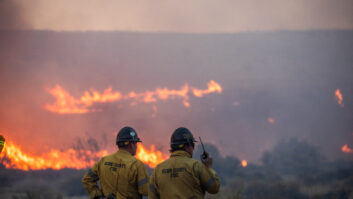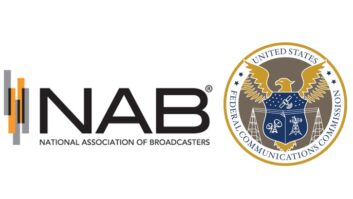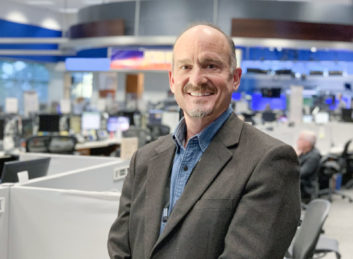 We’re pleased to announce that Roswell Clark is the recipient of Radio World’s Excellence in Engineering Award for 2021–22.
We’re pleased to announce that Roswell Clark is the recipient of Radio World’s Excellence in Engineering Award for 2021–22.
Recipients represent the highest ideals of the radio broadcast engineering profession and reflect those ideals through contributions to the industry. Roz Clark is the 18th person we’ve honored.
We are recognizing Roz for his accomplishments as senior director of radio engineering for Cox Media Group. In choosing honorees, we also look for people who are making a difference right now in our industry and whose work will benefit engineers in years to come.
Radio World readers know from our news coverage and ebook interviews that Roz is doing just that in his work with the NAB Radio Technology Committee’s Next-Generation Architecture Working Group.
We’re also honoring him for his important contributions to the IEEE Broadcast Technology Society, the Society of Broadcast Engineers, the National Radio Systems Committee and the Nielsen Technical Advisory Committee.
Given his decades of work on behalf of his employer as well as the broader world of radio, he is a worthy recipient.
“Technology is our business”
Clark, 59, oversees the technology aspects of Cox’s broadcast radio operations — “anything electrons flows through,” as he told me — which encompasses about 60 FM and AM signals in 11 markets.
Cox employs about two dozen technology team members in its markets.
“Anything to do with technology is our business,” Roz said. “Email servers, networks, broadcast, they’re all so intermarried that it’s difficult otherwise to make sure responsibility is properly focused and maintained.”
Roz is one of five senior directors who report to SVP/CIO Mark Beck and oversee areas such as radio, TV and network infrastructure, meeting weekly to coordinate and establish roadmaps. The radio market directors of engineering generally answer to local general managers and interact with Roz on a “dotted line” basis, though he has a few direct reports as well.
“It’s one big conversation. A finance product or an email function may be critical, but broadcast is real time and it needs to be completely seamless — that’s a whole different level of focus and attention. How do these systems interact with each other, and how do we safely connect them?”
[Read more about past Excellent in Engineering Award winners]
Meeting that challenge is a high bar, as broadcast engineers know well, but it also extends to software and anything that has a network connection. “We have to be very careful about the technologies we employ — that they’re actually suited and designed for such real-time functionality.”
When Cox Enterprises sold its majority interest to Apollo Global Management in late 2019, Roz also began to play larger role in the business continuity management for all of Cox Media Group, based on his experience dealing with Florida hurricanes and writing articles and giving presentations about disaster planning.
“We had tabletop exercises, getting key stakeholders together and talking about scenarios: What if your building caught fire and burned to the ground? What if your tower fell down?”
They even put together a scenario for a worldwide pandemic like bird flu — not expecting that within two months they would be activating it because of COVID-19.
Getting started
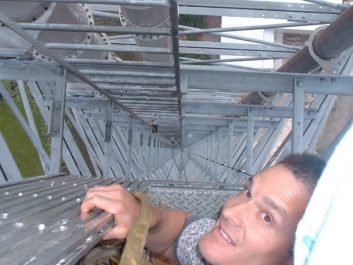
Roz Clark wasn’t one of those people who knew at age 5 that he wanted to be a radio engineer. “I’ve always been a curious cat about how things work under the hood, but I wasn’t building Heathkit radios at home.”
He studied electronics in a two-year program at what is now Truman University in Kirksville, Mo. He then moved to Florida and ran a business selling and servicing C-Band downlink systems.
It was at this time that his uncle Max Sitero, the chief engineer at the local CBS O&O, urged Roz to give radio a try.
“This was in the days when the getting into the business as an engineer was very difficult. You had to have the First Class FCC license and a track record just for someone to answer your phone call.”
But his uncle’s passion and interest in broadcast were contagious. Sitero helped young Roz a part-time job. It turned out to be a great place to start.
CBS-owned WSUN(AM) was a full-service, country-formatted station and flagship of the Tampa Bay Buccaneers, served by the world’s first AM directional array. Its sister station WYNF(FM) was a rocker with a popular, high-energy morning show, big-time concerts and lots of remotes.
“To work at this AM/FM combo was unbelievable. I mean, really? Many people had to work in small markets for many, many years, but I got my foot in the door at an epic AM/FM owned by CBS. It was a big deal.”
There he met two people who would play important roles in his life. One was his future wife Bobbie. The other was Chief Engineer Frank Berry, who mentored Roz and encouraged him to learn.
“Getting inside a radio station and seeing how all this technology worked together — it was all so exciting,” he said.
“I’m interested in everything from generators and power distribution to air conditioning and you name it. Everything comes together in a broadcast facility. I still feel like a kid in this business.
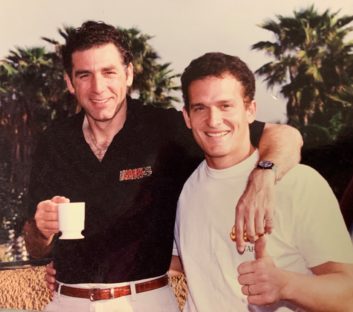
“Even today I just got off the phone talking about three completely different technology challenges and how to solve them. If you’re interested in solving puzzles or in having a different experience every day, I don’t think there’s any business more diverse than broadcasting — audio, RF, power distribution and computer networks, it goes on and on. The sky’s the limit on where your interests can take you.”
One thing he is not interested in is being on the air. This was squeezed out of him early. While waiting for a full-time position to open up at WSUN/WYNF, he took a gig as a board op at another station — playing from reel-to-reels and cart machines, recording the top of the hour, taking AM readings, fielding calls for the talk show host. And Roz didn’t like it.
“I was in nervous-sweat panic mode every second of that job. It was a nightmare for me. I understood how the equipment worked; but trying to make sure the content flowed and the on-air person got what he needed, making sure you didn’t forget to play the commercial, was very stressful.
“I have a great appreciation for board ops and people on the air, because as soon as that job option opened to get behind the curtain I was out of there. It was not for me!”
To Infinity and then back
Roz worked full-time at the CBS station for two years as assistant chief engineer, and loved the organization. Yet in 1988 he left to take part in an exciting engineering project.
Frank Berry had moved over to work at Infinity Broadcasting, which had studios a few doors away. Berry tempted him with the promise of working on the overhaul of WCBF, a recently acquired 50 kW AM facility.
As related by the website radioyears.com, Berry took that station off the air for an extended period to do a complete rebuild of the transmitter facility, including all of the towers, and gutting and reconfiguring the building, then installing new audio processors, STL gear, phasing and tuning equipment and remote control. The studios also were upgraded.
“Frank said, ‘We’re going to take this thing apart and it’s going to be off the air for four months while we completely rebuild it, studios and all,’” Roz related.
“Some readers might hear this story and say, ‘AM? What, are you crazy?’ But to build a 50 kilowatt station from the ground up within a span of four months, and do it right, with Frank Berry, and with consulting engineers like Alan Gearing, who were just masterminds — it was a great experience, never to be repeated.”
The station relaunched as WQYK; today it is owned by Beasley and has the call letters WHFS.
After that time with Infinity, Roz came back to CBS in 1992 to become director of technical operations at WYNF. It looked now as though he’d be with CBS for the long term — until the organization announced it had agreed to swap its Tampa properties with a Cox station in Dallas, and the local CBS employees were let go.
“I didn’t even reapply because I figured Cox had their own plans, but a week before they assumed control, they called me up and said, ‘Aren’t you going to apply for this job?’ So I did, in the role of assistant engineer.”
How do “solve for that”
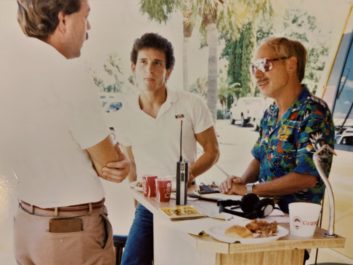
Since that time Roz has been a bulwark at Cox. He has been based in Tampa his entire career and worked his way up to chief engineer, then director of technical operations for Tampa (and later Orlando as well), and then to his current role as the company’s senior director of radio engineering.
During his tenure he has worked on numerous important internal issues including IT security, automation standardization, RF safety policies and broadcast data transmission under the wise leadership of Sterling Davis.
Roz wrote a mission statement to hang on his office wall to remind himself that the goal is not just to do good engineering, it’s to help the company meet its business challenges.
“How can we ‘solve for that’? Whether it’s your cell phone or your car or rockets, everything is about how technology can solve these sorts of puzzles, which seem to be insurmountable until you get smart people together.”
For example one memorable engineering project came about when Clear Channel acquired Jacor in the late 1990s and had to divest itself of several stations. Cox, which had three signals in Tampa, suddenly had six and decided to integrate them.
“Right about that time, my boss at Cox resigned. So I was the only engineer during a transition where we were taking over three stations. It was an exciting time, to say the least.
“We had to build radio stations from scratch. We built one in a closet and barely got it on the air — literally at the stroke of midnight, with the general manager walking around with the camcorder, all excited. We hit the post, so to speak, technically. No one knew the drama that was going on behind the curtain.”
During this time he has continued to expand his skill set, earning credentials as a Microsoft Certified Systems Engineer, SBE Certified Professional Broadcast Engineer and SBE Certified Broadcast Network Engineer. He has twice won his employer’s Engineer of the Year honor.
Today he spends a lot of his time envisioning the future of the radio air chain, both at Cox and across the industry. When I asked him how engineers and managers can be better prepared for that future, he mentions certain core concepts to keep front of mind.
“Our businesses run on processes. People throw around buzzwords like cloud, but pretty much everything we do, whether it’s in an appliance or not, is software of some sort. We as engineers need to understand how the signal flows and how the business processes work. That includes remote systems management, remote broadcast and broadcasting from home.
“Then it’s the technologies of networking, whether it’s transporting real-time content or connecting systems together; these are so important. Then how do you configure or design systems so they are very secure — who’s allowed to do what, at what time and where — ‘managing identity.’
“And then monitoring and control. If we don’t know the system status of all of our assets, the critical parameters and how to react to those measurements, we’ve got a problem.”
To manage these facets efficiently, Roz said, a business must standardize where it can, so Cox Media Group is taking that concept to the next level, not only choosing to buy the same products or software across its various stations, but thinking more broadly about the company’s 60 stations as being part of one big market. “We can get the best solutions and put them across every market and have the best results in a consistent manner.” For Cox that doesn’t mean sweeping centralization as much as it means consistency and efficiency in the business approach.
Like all good radio technologists, Roz is also concerned that the medium keep its place in the dashboard and stay competitive in how it presents its product to consumers.
Given the emergence of hybrid radio systems that meld broadcast reception with online connectivity, he thinks consistency in the listener experience is crucial, which means broadcasters should be paying attention to metadata.
“It requires a deeper understanding by content creators and managers, to understand the technical capabilities of the different delivery mechanisms and make sure that we exploit and standardize that capability.”
For example Cox was an early participant in RadioDNS. It also signed on with Quu’s visual programming service, and it supports Xperi’s DTS AutoStage initiative, which Roz says does a “mind-blowing” job of presenting visual information to the listener.
“I don’t believe we should stake our ground in one thing in the digital world; we have to have relationships with all of these platforms, because not one solution fills all the holes.”
Business partners
Almost three decades since “flipping” to Cox, he remains a huge fan of the company.
“I can’t say enough about Cox as a whole and about Cox Media Group. It continues to do things right, empowering people and investing in them.
“I’ve been very fortunate to work with general managers who have a deep appreciation for engineering and the part it plays in the business. Keith Lawless, who now manages multiple markets for Cox, once described me to someone as a business partner. That’s a huge compliment. If the culture of your company appreciates the partnership that we in technology have with the business, that’s a big thing. I can tell you that, in Cox Media Group, we’re very much part of business decisions and strategy.”
Roz gives back to his profession in numerous ways.
He has delivered several papers and chaired sessions for the NAB Show, and he was involved in an NAB group that researched the use of separate antennas for HD Radio, a concept he conceived known as space combining.
For the NAB Radio Technology Committee, he chaired the HD Time Alignment group that developed a best practice document that was adopted by the NRSC. Today he chairs the Next-Generation Architecture group, helping the industry to learn how to put concepts like virtualization and the cloud to work in their air chains.
For the Society of Broadcast Engineers, Roz is an elected board member, chair of its finance committee and a member of the executive officers committee. In 2015 he was honored as the SBE Engineer of the Year. At Chapter 39 he has held multiple offices including that of chairman.
In the early 2000s he was actively involved in the Media Reliability and Security Council and the integration of
local Emergency Operations Centers in the Tampa Bay area into the EAS system. He has represented CMG in EAS Operational Areas 7 and 8.
Since 2009 he has been an active member of the IEEE Broadcast Technology Symposium; he chaired the event for three years and was an elected member of its ADCOM for two years.
He is the technical representative for CMG in the Broadcasters’ Traffic Consortium. He also is a ham radio operator, WA4YNF, and serves on the board of a repeater network that serves a large part of Florida.
A lifestyle choice
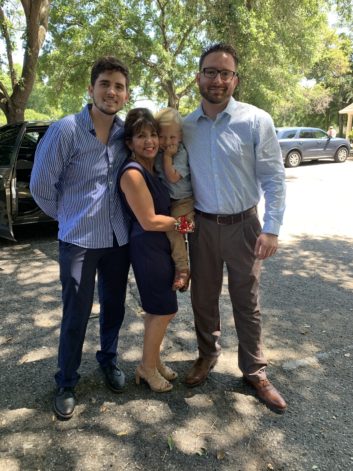
When I asked him to describe his management personality, he replied, “I try to treat others as I would want to be treated. And at Cox there’s a culture of getting the right person and empowering them, giving them the tools they need and then letting them do their job.
“That sounds really easy, but it’s not,” he continued. “Technology is challenging, but the most important thing is getting the right people doing the right things — giving the right leaders the right boundaries and allowing them to do their job, supported by coaching and followup. For instance, recognizing that some people are more creative than task-driven.
“You have to understand the technology too — invest in reading, trade shows, learning from vendors and adjacent businesses. We have to lead by example with that,” he said.
“But we also have to make sure people are given the flexibility and freedom to execute and be successful on their own.”
Outside of radio, Roz enjoys camping and the great outdoors, and is active in his church. He also restores muscle cars and still owns a 1967 GTO that he purchased 40 years ago.
Roz and Bobbie have two grown sons, one of whom is a mechanical engineer, the other a business/marketing professional, as well as two small grandchildren.
Would he encourage a young person to get into radio broadcast technology today?
“It’s not like any other type of engineering job. If you’re interested in all sorts of technology, the answer would be yes — but understand that it’s a lifestyle choice.”
Comment on this or any story. Email [email protected].
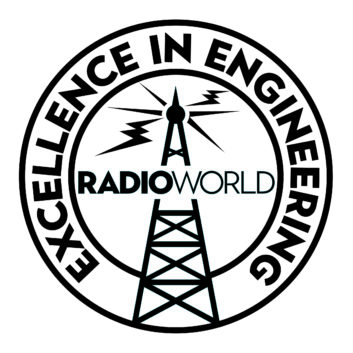
Excellence Honor Roll
2004 Andy Andreson
2005 Mike Starling
2006 John Lyons
2007 Clay Freinwald
2008 Jeff Littlejohn
2009 Gary Kline
2010 Milford Smith
2011 Barry Thomas
2012 Paul Brenner
2013 Marty Garrison
2014 Wayne Pecena
2015 David H. Layer
2016–17 Michael Cooney
2017–18 Larry Wilkins
2018–19 Russ Mundschenk
2019–20 Dave Kolesar
2020–21 Jason Ornellas
2021–22 Roz Clark
